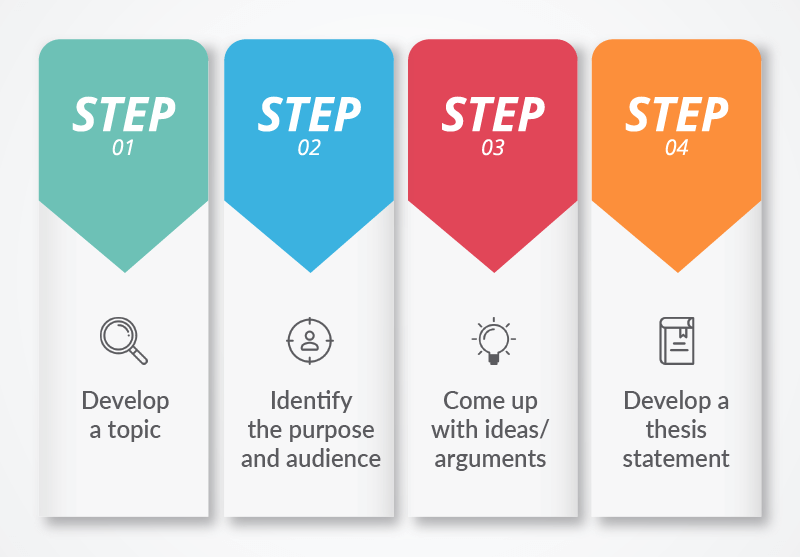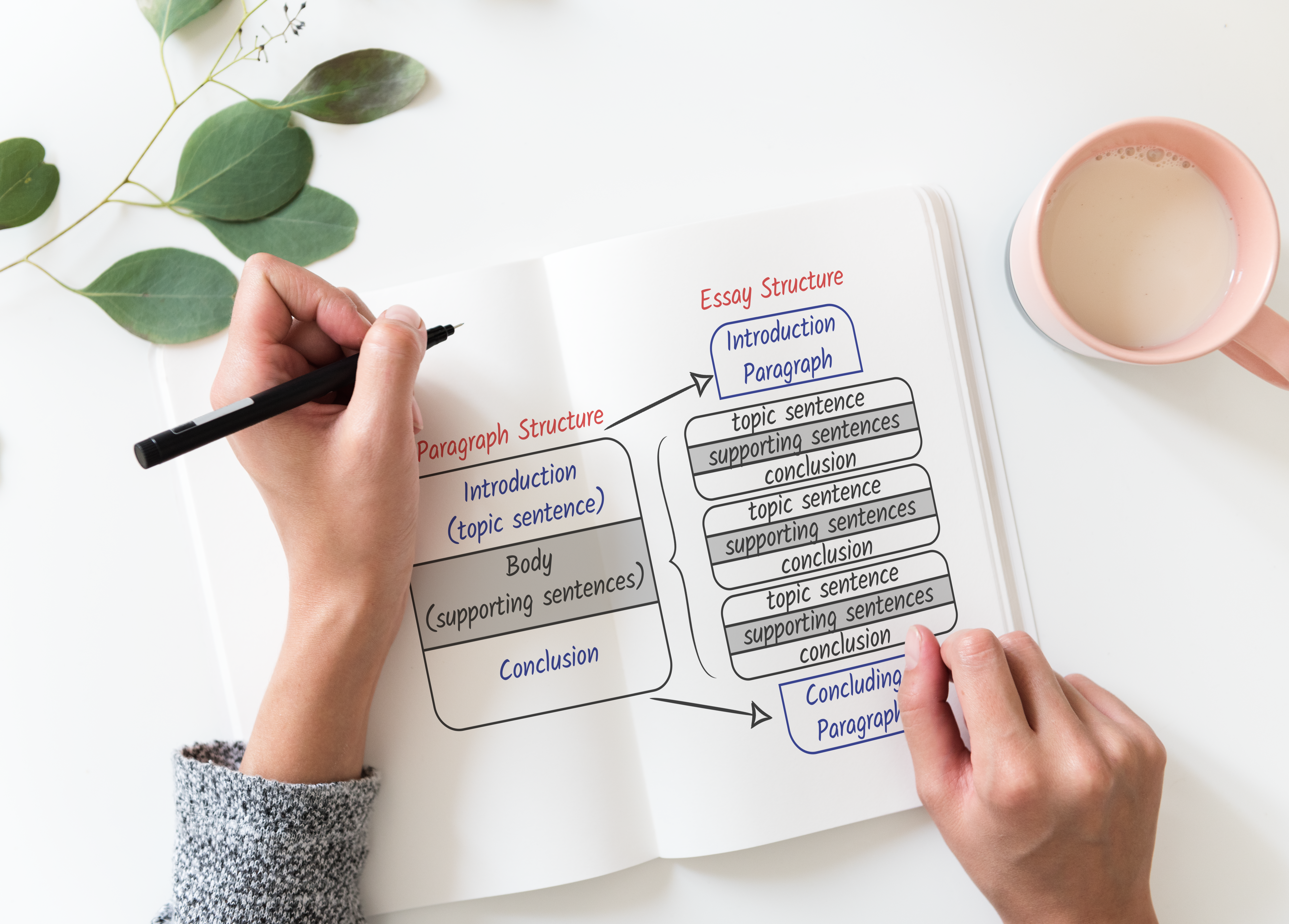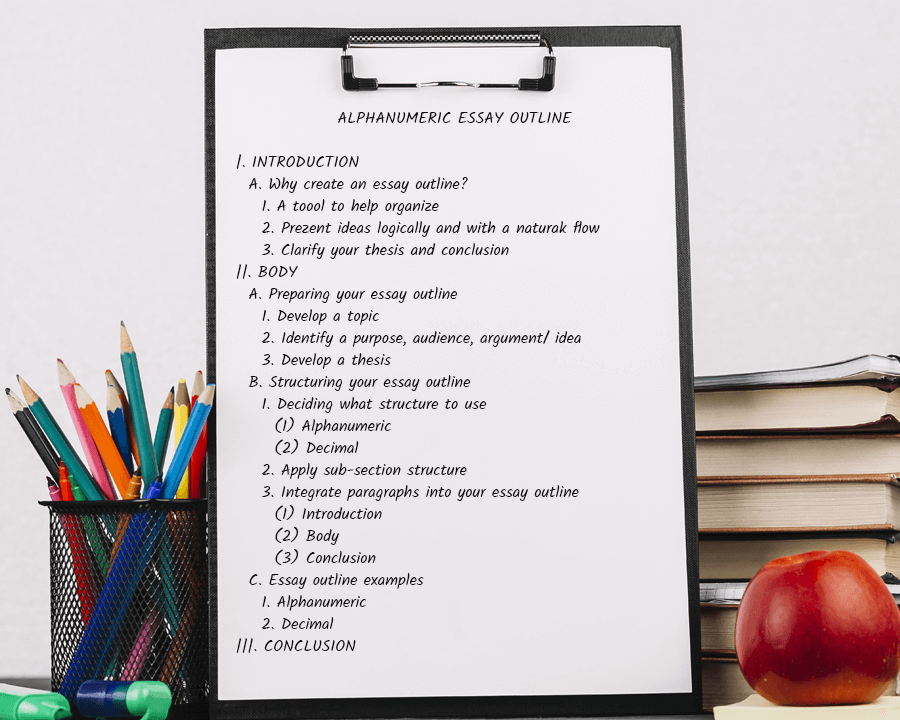What is an Essay Outline?
An outline is a tool that you can use for organizing your ideas and structuring your essay in a proper manner. It should summarize your essay and help you organize your content in a logical order. An outline can guide you throughout the writing process and remind you of what you should be writing about. Most commonly, an essay is written following a 5-paragraph structure, addressing the key points that you have laid out in the outline. Below, you will find more about the proper structure of your essay outline and what these 5 paragraphs should include.
Why Do You Need It?
Sitting down to write an essay can be overwhelming. Writing an outline helps alleviate some of that frustration. Furthermore, it will help you organize thoughts, present ideas logically and with a natural flow, as well as clarify your thesis and conclusion.
Find out the basic essay information with this article: What is an Essay?
Overall, an outline will help you communicate your point in a clear and organized format. The structure of your essay will rely on the outline you compose.
Preparing Your Outline
Before you begin writing an outline for the essay, make sure you understand the assignment. Namely, what exactly is the instructor looking for? Our essay writer recommends you to follow these simple steps:

1. Develop a Topic
The first step in your outline is to identify your topic. Once you have a clear understanding of the instructor’s expectations, begin brainstorming topics that fit within the assignment. Make a list of ideas and pick the ones that are of your interest. If you are stuck between a few ideas, begin free writing. Give yourself 5 minutes for each idea and just write everything that first comes to mind without editing or stopping. The idea that inspires you the most may just be the perfect essay topic for this assignment. In fact, essays are easier to write and read if the author is passionate about what he/she is writing.
Related Posts: Argumentative essay topics | Compare&Contrast essay topics
2. Identify the purpose, audience, and argument/ideas
Once you have developed a topic, you will need to define the purpose (or the reason) for writing this essay as well as who you are writing for. By having a clear understanding of the purpose, the audience, and the necessary arguments/ideas that need to be addressed, you will be better prepared to write an influential essay.

Take a second to look back over the instructions for the assignment and ask yourself the following questions.
- What are the objectives of the assignment?
- Are there keywords that stand out in the instructions?
- Are you being asked to persuade, entertain, enlighten, or educate your audience?
- Who is your audience? Is it the teacher, the other students, or someone else?
- What arguments or counter ideas might the audience have for your topic/idea?
- What emotions might these ideas bring up and how can you counterbalance them with facts?
3. Develop a thesis statement
Now that you know your topic, purpose, audience and have developed your main arguments/ideas – it is time to write your thesis statement. A thesis is only one to two sentences long and highlights the question your essay will be answering. It does not state your opinion or list facts though, but rather identifies what you will be arguing for or against within the body of your essay. Keep in mind that thesis statements must be accurate, clear, and relevant to the topic.
Structuring Your Outline
Now that you have read the above information, the question is: how to write an essay outline?
First, decide on what structure to use. There are two main essay outline formats to choose from: alphanumeric and decimal.
The alphanumeric format uses Roman numerals (I, II, III, IV, etc), capital letters (A, B, C, D, etc.), Arabic numerals (1, 2, 3, 4, etc.), and lowercase letters (a, b, c, d, etc.). This one is more common than the other.
On the contrary, the decimal format only uses numbers. It begins with 1.0. Subsections add a decimal. The most important points under 1.0 would be 1.1, 1.2, etc. The subsections beneath 1.1 would be 1.1.1, 1.1.2, 1.1.3, etc. For a visual example of an essay outline scroll to the bottom of this article.
For the visual examples of the stated outline formats, scroll down to the bottom of this article.
Apply sub-section structure. The more detailed content of your essay will be found within the sub-sections, while the main sections are your fundamental ideas and arguments. Therefore, the sub-sections are the facts that support main sections. Think of the section title as the topic sentence for your paragraph and the sub-section as the tiny details that explain the idea of the topic. Notably, your sub-sections need to flow naturally from one to another.

Integrate paragraphs into your outline. Start fleshing out your section and subsection notes. Your introduction will need to include your topic and thesis statement. For a short essay, this only needs to be one paragraph long. Then, refer to your assignment instructions to clarify the length. Next is the body part – a ‘skeleton’ on which the entire essay is based. This section will consist of several paragraphs, each playing a supportive role in the filling of your thesis. The final section of your outline is the conclusion. This is a summary of everything you have stated in your essay. In this part, paraphrase your thesis statement and highlight the arguments made within the essay to support it. Remember that presenting new ideas and concepts in the concluding sentences is a big academic mistake. Rather, your final words should only emphasize the points you’ve indicated earlier and focus on the already-highlighted ideas.
Essay Outline Examples
Now, it’s time to showcase the most common essay outline types. For you to get the right idea of what an outline actually is, we have transformed the content of the article you are currently reading into an outline.
Alphanumeric format essay outline sample:

Decimal format essay outline sample:

Drawing the Line
Now that you know how to use an essay outline, you are well on your way to writing clear, persuasive essays. This tool will help you improve your writing and earn a higher grade for your essay. Now it’s time for you to get started and make use of this tool.
In case you have any questions, you are free to skim through our essay writing guide where you can find helpful information on how to plan, structure and write different types of essays.










